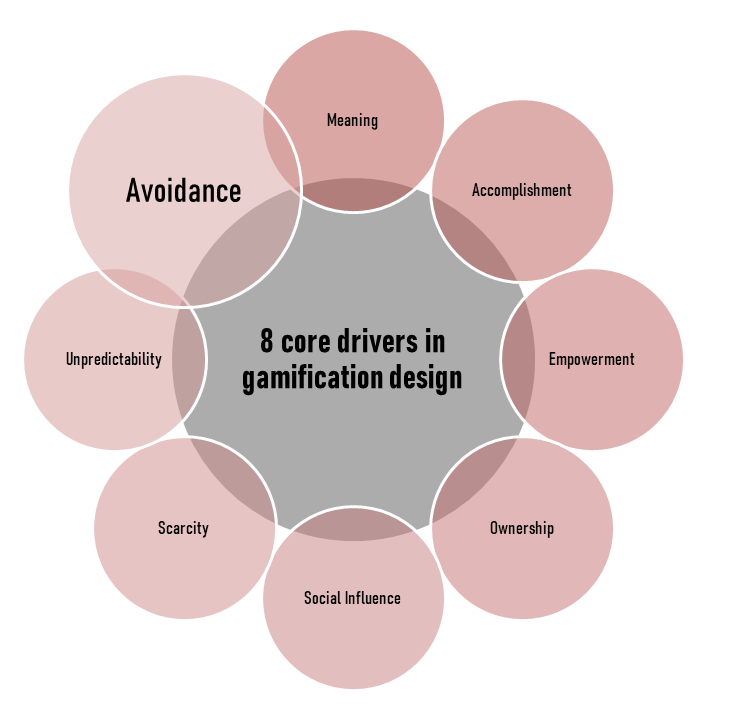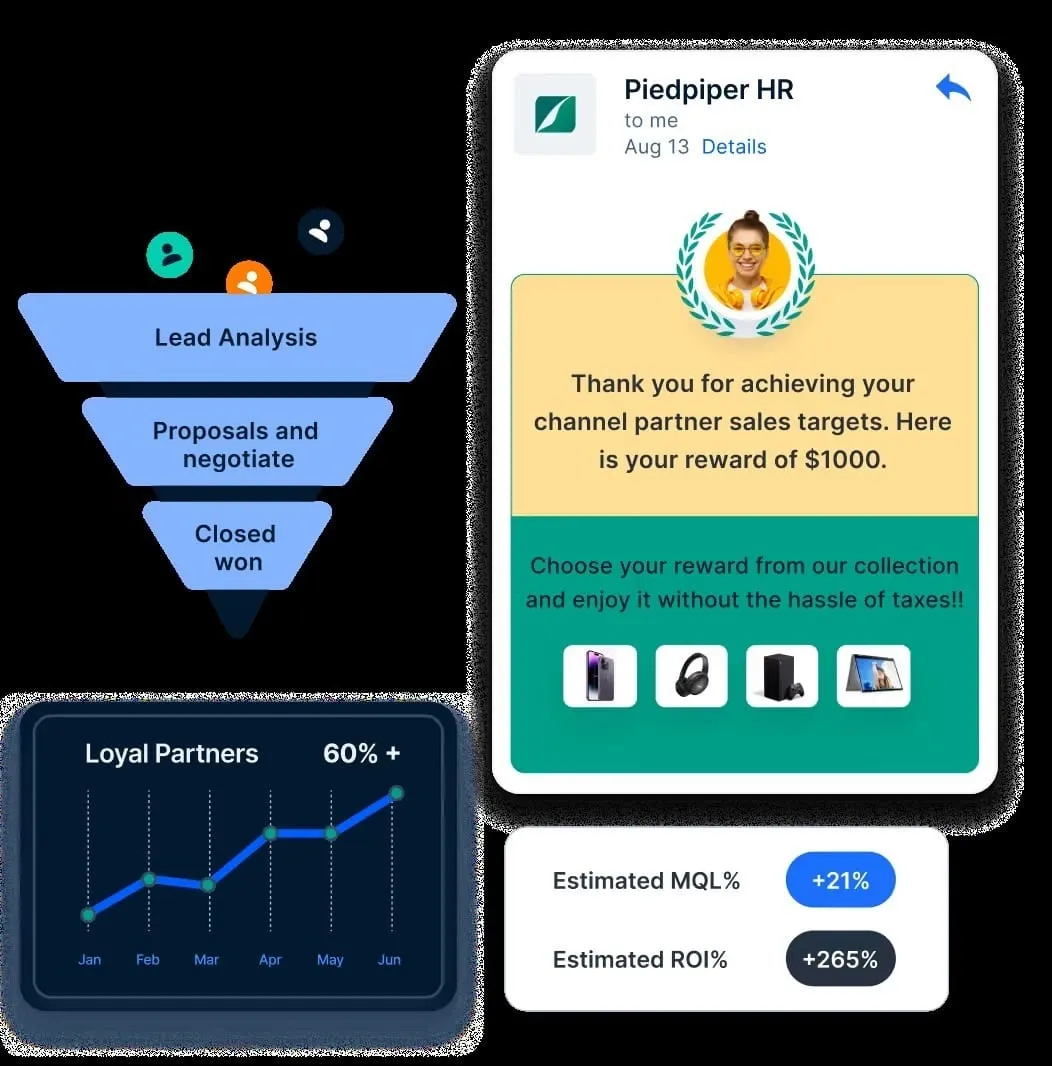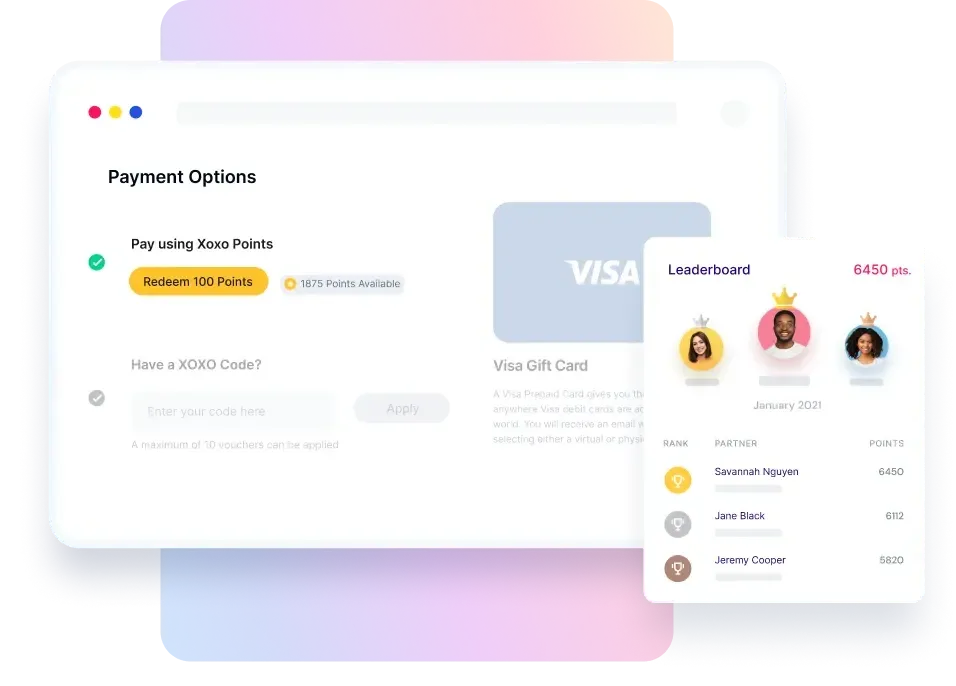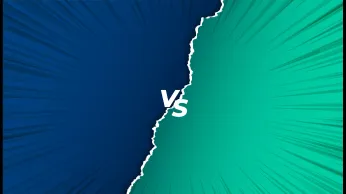Menggunakan Kecondongan Kerugian untuk Mengubah Suai Tingkah Laku Pengguna dan Pekerja
Kami telah menghabiskan begitu banyak masa untuk bertengkar tentang jenis pemasaran yang terbaik sehingga kami sering lupa tentangnya: Pemasaran manusia kepada manusia.
Pada halaman ini
Why is it so difficult to toss that dress or the shirt that you know you are not going to wear? Or give away that book that has been on the shelf forever, and you haven’t read? Why is it not easy to give up that job that you absolutely hate doing?
Though you know that giving them up is the most rational thing to do, your mind still refuses to do so. Why are we so afraid of losing something? This is because we human beings are wired that way. We try to avoid loss more than trying to pursue a similar gain. This phenomenon is popularly known as Loss Aversion. In this article, witness a few loss aversion examples where this principle is applied to modify consumer buying behavior for marketing and employee behavior and attitudes for HR.
Nobel prize-winning psychologists Daniel Kahneman and Amos Tversky, proposed the Prospect theory in the year 1979, which popularized the concept of loss aversion. Even today, Prospect theory is considered to be one of the most influential theoretical frameworks in the field of behavioral economics.
Kajian Kanheman- Amos ini mendapati bahawa manusia bertindak balas secara berbeza terhadap keuntungan dan kerugian; menang dan gagal; Pada asasnya, apa-apa perubahan positif dan negatif kepada status quo kami. Kehilangan sesuatu (wang, item, pekerjaan, perjanjian besar, dan lain-lain) boleh menjadi dua kali lebih menyakitkan daripada mendapatkan perkara yang sama.
Sebagai contoh, kesakitan kehilangan bil $ 100 yang anda jatuh secara tidak sengaja semasa mencari dompet anda boleh menjadi lebih besar daripada menerima bil $ 100 sebagai hadiah daripada seseorang.

Keengganan kerugian tidak terhad kepada emosi kehilangan wang atau pemilikan materialistik. Ia terpakai kepada setiap aspek kehidupan seharian kita. Pada asasnya, keengganan kehilangan sebagai prinsip mempengaruhi emosi manusia - emosi melecur atau mengecilkan apa-apa. Manusia takut kehilangan apa-apa yang kita "miliki" - sama ada hubungan, perniagaan, idea, pemikiran dan apa yang tidak. Sebagai contoh, anda tidak suka kehilangan hujah di mana anda membincangkan sukan kegemaran anda, ideologi politik atau sesuatu yang anda minati.
Businesses of today are investing a lot of time and money in understanding human behaviours and how subtle aspects of organizational policies, design, rewards, recognition etc. change can greatly influence employee and customer behaviors.
Loss aversion bias applied to consumer buying behavior for marketing
We have all come across marketing campaigns that say – “Limited period offer, only for you!”, “Best price, applicable only till midnight”, “Register now to get free service for a year”, “Last chance to buy”, etc. And most of us, at some point of time in our life, have been guilty of making an impulsive purchase, in fear of missing out on a great deal.
Have you also experienced this “Fear of Missing Out” or FOMO? Don’t worry, you are not alone. 70% of the millennials experience FOMO on a regular basis, says a recent study.

FOMO is nothing but a form of social anxiety, that has its deeper roots in the principle of Loss Aversion – and invokes fear of missing out on an exciting opportunity or a deal in people.

Konsep FOMO dan keengganan kerugian pasti menangkap imaginasi semua pemasar. Dan tidak hairanlah setiap laman web dan setiap jenama, pada satu ketika dalam masa atau yang lain, telah cuba mengiklankan tawaran yang "berakhir tidak lama lagi" (yang kebanyakannya tidak!).
However, one needs to be extremely careful not to overuse loss aversion in their customer campaigns. When overused, loss aversion can lead to what is called banner blindness – i.e., customers are unlikely to click on anything that looks like an ad.

“95% of the purchasing decisions are made subconsciously,” says professor Gerald Zaltman in his book How Customers Think: Essential Insights into the Mind of the Market. Emotion is what drives customers’ purchasing behaviors he says.
Hence, to effectively use loss aversion to increase conversion rate and brand engagement requires a precise understanding of your customer behaviors, what they are afraid of losing, and why, and providing them with an appropriate solution to avoid this loss.
Berikut ialah beberapa contoh strategi pengalihan kerugian yang boleh membantu meningkatkan kadar penukaran dan penglibatan pelanggan tanpa memaksa:
1. Kongsi data yang relevan untuk membantu membuat keputusan

Iklan Ford Galaxie (yang relevan untuk tahun 70-an) menggunakan fakta secara meluas dalam salinan Iklan untuk membuat keputusan
Letakkan nilai yang diperoleh pelanggan daripada produk anda. Apabila pelanggan melihat jurang antara keadaan semasa dan apa yang dia hilang tanpa produk anda, ia hanya berfungsi keajaiban.
2. Use customer loyalty programs to give a friendly nudge
While using rewards and incentive programs with your customers, if you also set an expiry to the redemption of the same, it instils a sense of urgency amongst the customers – pushing them to take action sooner rather than later. The idea behind using rewards and incentives is to encourage customers to routinely engage in the product/ brand.

3. Mewujudkan rasa pemilikan
Kita sering membina ikatan yang kuat dengan perkara-perkara yang kita miliki. Begitu banyak sehingga kita mula menilai objek (lebih daripada nilai sebenar) dan oleh itu, sukar untuk melepaskannya. Ini, dari segi psikologi, dipanggil Kesan Endowmen.

Slack’s free trial and conversion rate of 40% reported in 2014 is an example of capitalizing on endowment
Oleh itu, apabila anda memberi pelanggan anda percubaan percuma atau sampel produk percuma, anda mewujudkan rasa pemilikan untuk mendorong kesan endowmen dan mempengaruhi mereka secara positif. Mereka dapat menggunakan versi produk yang dimuatkan sepenuhnya dan mengembangkan ikatan yang begitu kuat sehingga mereka merasa sukar untuk kehilangannya apabila percubaan berakhir - mendorong mereka untuk mendaftar untuk produk.
4. Provide with the right choices
Penyelidikan menunjukkan bahawa pelanggan cenderung memilih bilangan ciri yang lebih tinggi apabila mereka dibentangkan dengan produk timbunan penuh - dimuatkan dengan semua ciri - dan dibenarkan memilih ciri apa yang ingin mereka kecilkan semasa pembayaran.

This feature comparison Ad copy of Volkswagen Jetta (2019) aims to diminish sensitivity towards the price.
Di sini ideanya adalah untuk mewujudkan rasa keengganan kerugian dengan ciri-ciri yang seterusnya mempunyai kuasa untuk mengurangkan kepekaan terhadap harga.
5. Gunakan ulasan pelanggan dengan berkesan
Social proofing is a great way through which your customers can feel connected to your products. So, when you introduce testimonials from other customers to which your audience can relate, it invokes a sense of missing out on something that can make a difference to them – again, pushing them towards the desired action.

Testimonials (like the one above of the Udemy business version) give social proofs for virtual business offerings
These examples are only indicative of how powerful loss aversion can be. Each organization can build their own strategies, based on what its target customers really want. When used effectively, loss aversion can be extremely powerful in influencing customer behavior.
Leveraging rewards to influence consumer behavior
While loss aversion primarily hinges on the psychological discomfort of losing something of value, integrating rewards into this concept can significantly amplify its effectiveness—especially in marketing and HR strategies. By framing rewards in a way that emphasizes potential loss instead of just gain, brands and organizations can create stronger behavioral nudges that drive consistent action.
Reward programs that reinforce retention
Traditional loyalty programs focus on the accumulation of points or perks, but adding a loss aversion layer makes them more compelling. When customers are reminded that their unused loyalty points are about to expire, or that a special offer will vanish after a set deadline, it introduces a psychological pressure to act quickly.
Example strategies:
- Expiring rewards: Create a sense of urgency by reminding users that their accumulated cashback or points will lapse if not redeemed within a specific timeframe.
This time-bound pressure leverages loss aversion and nudges users to act before they lose the benefits they’ve already earned.
- Tier downgrades: Show customers how close they are to maintaining a loyalty tier and warn them of upcoming downgrades if engagement drops.
- Limited redemption windows: Offer exclusive rewards or access for a short duration to increase urgency.
These small changes use loss framing to subtly encourage customer retention, repeat purchases, and ongoing engagement—because the idea of “losing out” on something already earned feels more painful than simply not receiving it.
Loss aversion bias applied to improve employee behaviors and attitudes
In a digital world that is becoming more and more transparent, blurring the line between personal and professional lives, employees constantly seek meaningful work and motivating rewards. Forward-thinking organizations are spending more and more time understanding employee behaviors and aligning them with organizational goals to constantly keep them motivated.
Prinsip ekonomi tradisional menyatakan bahawa insentif kewangan, ganjaran, dan pengiktirafan boleh menjadi pemacu yang hebat untuk prestasi dan penglibatan pekerja. Walau bagaimanapun, ini hanyalah motivator ekstrinsik dan tidak memberi keadilan kepada gambaran motivasi pekerja yang lebih besar. Untuk contoh. Seorang pekerja yang meletakkan banyak usaha ke dalam pengekodan ciri produk dan menyampaikannya dengan baik dalam tarikh akhir - hanya untuk mendapatkan Kupon Amazon yang besar.
Whereas behavioral economic principles suggest that monetary rewards, salaries, and bonuses alone are not sufficient to drive employee engagement. In fact, A review of 120 years of research found that the link between salary and job satisfaction is extremely bleak, and this is true globally.
"Lupakan pujian. Lupakan hukuman. Lupakan wang tunai. Anda perlu menjadikan pekerjaan mereka lebih menarik." kata Frederick Herzberg, ahli psikologi Amerika.
Manusia berkembang maju pada motivator intrinsik seperti autonomi, rasa tujuan, penguasaan subjek, dan sebagainya. Ini adalah faktor motivasi yang datang dari dalam dan mendorong pekerja untuk melakukan sesuatu demi kepuasan peribadi. Sebagai contoh, seorang Pekerja yang menyampaikan pengekodan ciri produk yang kompleks dengan baik dalam masa, hanya kerana dia suka melakukannya, dan benar-benar menikmati proses pembelajaran.
When organizations consider these human idiosyncrasies to design employee engagement programs that nudge employee behaviors towards better performance and increased motivation, it truly works wonders.
Further to this, the loss aversion phenomenon shows that people are motivated better by the fear of loss than the promise of rewards. So, effective employee programs need to be designed in such a way that they not only reward success but also have a clause to penalize failures. Research has time and again proven that limited use of penalties has driven higher productivity and effectiveness amongst employees. At times, penalties can simply mean altercated language to communicate the feeling of loss – For E.g. “You will lose your extra 5% bonus if you don't complete the project by the end of the month”.
Mari kita lihat beberapa contoh bagaimana program ganjaran dan pengiktirafan dapat dirangka dengan cara yang menarik bagi keengganan kehilangan pekerja:
1. Constant positive feedback
Consistent, personal feedback and appreciation have a profound effect on human psychology.

Apabila tindakan pekerja dihargai dan diberi ganjaran, ia secara automatik mencetuskan keinginan untuk melakukan tindakan sekali lagi - dengan cara yang lebih baik. Kepuasan menerima maklum balas positif boleh menjadi motivator yang besar, yang pekerja tidak mahu kehilangan.
2. Implement instant gratification
Pekerja mencari nilai untuk diiktiraf atas pencapaian mereka iaitu dalam bentuk insentif, anugerah tempat dan sebagainya. - Lambat laun.
Walaupun kepuasan segera adalah rangsangan moral yang besar kepada pencapai, ia mendorong orang lain dalam pasukan untuk bersaing lebih keras untuk mencapai matlamat mereka.

Dengan Empuls pengguna boleh menghantar ganjaran dan penghargaan segera
3. Keep innovating, keep changing
Teruskan menukar ganjaran supaya pekerja tidak berpuas hati dengan apa yang ditawarkan.

Pekerja perlu tertarik, terlibat, dan bermotivasi untuk berjuang untuk ganjaran. Program insentif yang hebat adalah salah satu yang tidak pernah statik.

Compass menggunakan pengijazahan, ganjaran berasaskan pencapaian untuk prestasi
4. Gamification
Organisasi semakin menggunakan teknik gamifikasi (seperti papan pendahulu, lencana, dan lain-lain) untuk meningkatkan motivasi pekerja dan mendorong hasil yang boleh diukur.

‘Avoidance’ of ‘loss aversion is one of the 8 core drivers in gamification design.
Gamification is known to deliver proven results like – increased engagement, improved performances, increased competition, while instilling positive behavior.

Compass menggunakan elemen gamifikasi seperti papan pendahulu untuk memacu prestasi
Using rewards and recognition programs to strategically influence employee behaviors can drive better engagement and improved performance.
Leveraging rewards to influence employee behavior
In workplace contexts, incentives don’t always have to be structured around future gains. Instead, forward-thinking companies are now experimenting with “prepaid” bonuses or rewards that employees stand to lose if performance expectations aren’t met. This flips the traditional model—motivating through potential loss rather than distant rewards.
Example strategies:
- Performance bonuses: Provide a performance bonus upfront with the clause that it will be deducted if quarterly targets aren't met.

- Gamified leaderboards: Reset performance rankings monthly or quarterly using a leaderboard, so employees are incentivized to maintain their position and not “fall behind.”

- Time-sensitive recognition programs: Offer spot awards with a redemption window, emphasizing the urgency to act before they vanish.
These tactics align with behavioral economics findings: people will work harder to retain what they believe is theirs than to earn something new.
Pemikiran akhir
Behavioral economics principles like loss aversion play a huge role in employee or customer behaviors. While these principles can greatly influence behaviors, the idea of using these in workplaces should be to increase engagement and not invoke a sense of fear.
Rewards, recognition, and incentives when designed with behavioral economics principles, works wonders in shaping employee and customer behaviors. Understanding their needs and fears can help you design loyalty and engagement programs that can positively influence their behaviors.
Keen to know more about how to apply loss aversion to drive your customer and employee behaviors?
Connect with our experts and know how Xoxoday products help you use loss aversion to your advantage.










